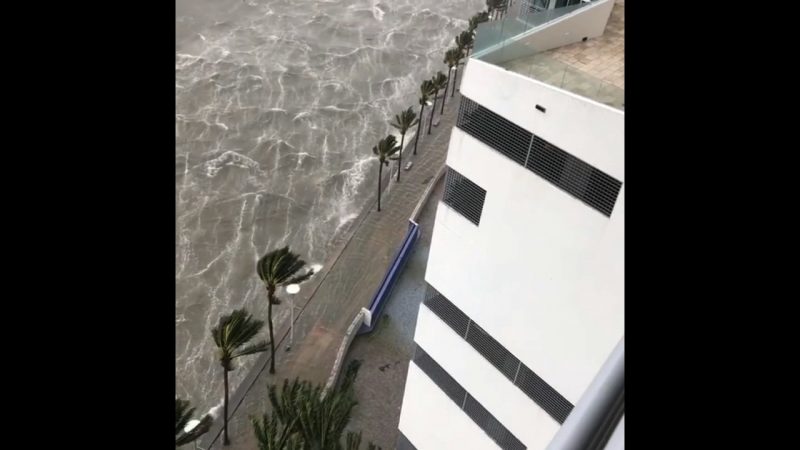South Floridians woke up Sunday to Hurricane Irma as the monster storm made landfall in the Florida Keys, downing trees and hurling street signs and debris and knocking the power out to hundreds of thousands of residents throughout the state.
The National Hurricane Center said Irma is expected to remain powerful as it heads north along the state’s Gulf Coast.
This is the scene in south Florida as Irma blasts the state with torrential winds and rain.
CNN’s Derek Van Dam, reporting from Miami Beach, said the roaring winds felt like a jet engine. “It just stings every time one of these gusts comes through.”
“Anyone who didn’t heed the evacuation orders here in Miami Beach, it’s time to bunker down,” Van Dam said. “It is time to take this storm seriously. Do not come back to the evacuation zones. It has just begun, and it’s going to get worse.”
Irma hit South Florida on Sunday with maximum sustained winds of 130 mph, according to the National Hurricane Center.
“If you own a power washer … imagine taking it in the face,” said CNN’s Bill Weir of the torrential rain in Key Largo, some 70 miles south of Miami.
Brad Whitworth of Texas is riding the storm out in Tavernier, Florida, just south of Key Largo. He told CNN he has homes there and in Houston, which was hit by heavy flooding from Hurricane Harvey two weeks ago.
In other parts of the state, like Tampa, residents had yet to see the worst that Irma could offer, and either evacuated the area or prepared to shelter in place.
Some residents went out to find Irma had stolen the water away from the beach.
Facebook user Dylan Branscome shared this video of boats in Charlotte Harbor sitting on their sides offshore.
“As the storm approaches from the south, places like Tampa and Port Charlotte are getting strong winds out of the northeast,” CNN meteorologist Judson Jones said of the phenomenon. “These winds are strong enough to push the water out of some of the shallow areas of the bays and harbors.”
Jones added that once the wind direction shifts, the water will quickly return.
